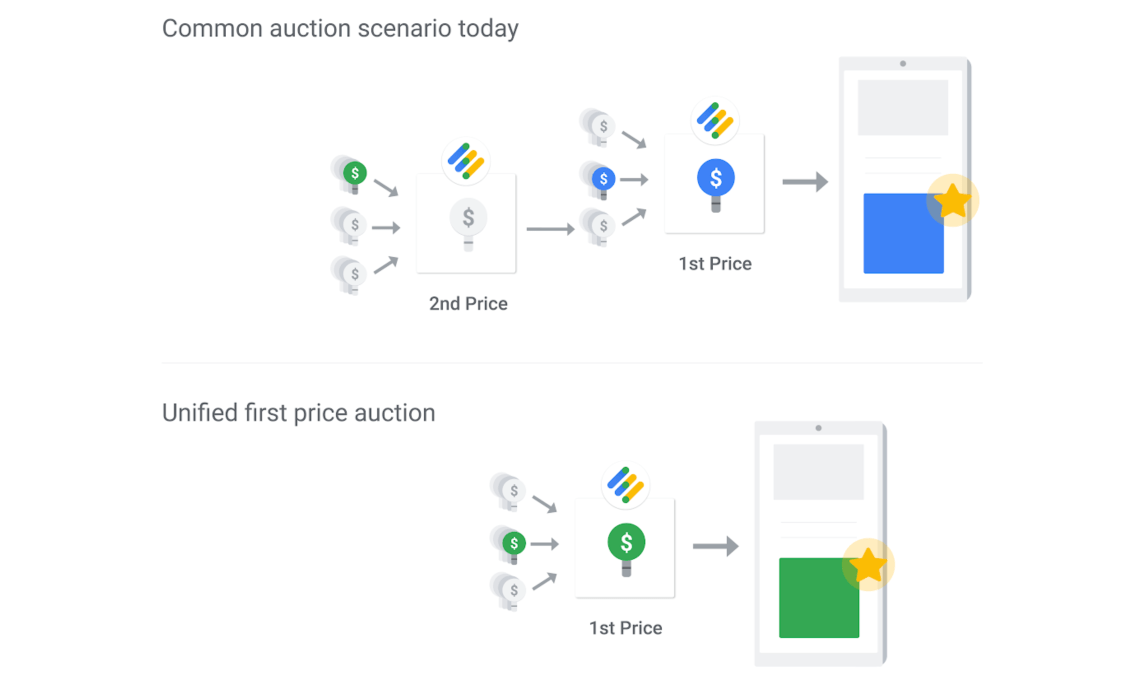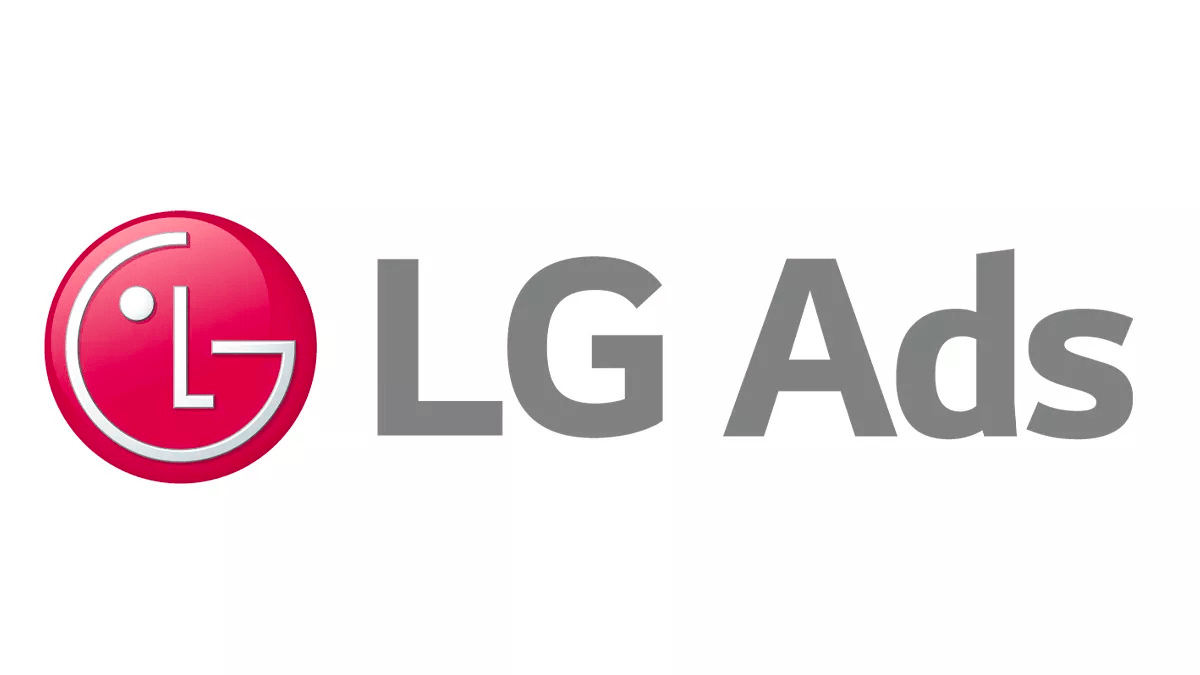Unified First-Price Auctions and Unified Pricing Rules in Google Ad Manager (GAM)
Starting Monday, June 10 2019 Google will start testing unified first-price auction (1PA) on 1% of Ad Exchange traffic. This traffic will be randomly chosen by GAM’s algorithms. This transition phase will be continued until late July 2019 and 100% of your Ad Exchange traffic will be transitioned to a unified first-price auction. Check out Transition schedule to first-price auction here to stay updated about the upcoming changes.
According to Google’s statement, switching to unified first-price auction from second-price auction will simplify the auction process and create a fair and transparent ecosystem for both Buyers and Publishers.
Both Buyers and Sellers need to adjust their programmatic strategies in upcoming days to stay ahead of the new changes. Publishers need to rethink how they use price floors and evaluate their inventory correctly. Unified first-price auctions will only affect on display and video inventory sold via Google Ad Manager (GAM). This will not have any impact on Google owned products such as Google Search, AdSense for Search, YouTube, and other Google properties where it controls end-to-end buying experience.
Everything you need to know about Unified first-price auction in Google Ad Manager:
In a unified first-price auction, multiple ad exchanges can have access to the same Publisher’s inventory and bid accordingly at the same time. Unlike second-price auction where the highest bidder pays the second highest bid price + 0.01, highest bidder who wins the unified first-price auction pays the exact price for the winning bid. In theory, this will simplify the process for everyone involved in the unified first-price auction. This will also force Publishers to value their inventory correctly for not losing revenue due to incorrect pricing.
In a nutshell, Unified first-price auction will hold a single-stage auction for your Google Authorized Buyers (aka. Ad Exchange Buyers), Private Auctions (both optimized and non-optimized), First Look demand, Exchange Bidding buyers and other Demand partners buying through non-guaranteed line items (Network, Bulk and Price Priority).
Many Publishers are worried that the advanced buying techniques such as bid shading used by the Buyers will affect their revenue and Buyers will constantly try to undervalue their inventory. While we cannot say for sure as lot of things happening at the same time, we are sure that this is a wake up call for Publishers to evaluate their inventory correctly and set correct floors using Unified Pricing Rules (UPR’s).
Google’s move to first-price auctions will affect Publishers in two ways, it will have a direct impact on CPM’s generated from Ad Exchange and it will modify the balance of revenue between Ad Exchange, Header Bidding and Exchange Bidding. Publishers need to frequently segment and evaluate their inventory to adjust floor prices and stay on top of their revenue goals. Advanced Buyers with deep pockets are already using bid shading techniques to reduce CPM’s and hence the cost of purchasing inventory. But with the right tools at their disposal and a proper homework, Publishers can tackle these challenges comfortably.
Learn more about Unified first-price auction here:
- Google: Simplifying programmatic: first price auctions for Google Ad Manager
- Google: An update on first price auctions for Google Ad Manager
- DigiDay: What is a unified ad auction?
- DigiDay: ‘It’s a shakedown’: Everything you need to know about Google’s ‘unified pricing’ product changes
- AdExchnger: Google Switches To First-Price Auction
Everything about the Unified Pricing Rules (UPR’s) in Google Ad Manager:
Publishers can use Unified Pricing Rules (UPR’s) for centralized management of floor prices across their network for remnant traffic (programmatic demand).
You can access unified pricing rules by navigating to Inventory > Pricing rules from your GAM dashboard.
Where do unified pricing rules are effective?
- The Open Auction via Authorized Buyers (formerly known as Ad Exchange Buyers)
- Private Auctions (both optimized and non-optimized)
- First Look demand
- Third-party exchanges that participate in Exchange Bidding
- Remnant line item types Price Priority, Network and Bulk
- Ad Exchange linked accounts
How does the Unified pricing rules work?
- The rule with the higher floor price applies where two unified pricing rules target the same inventory.
- For Ad Exchange demand, if Open Auction pricing rule and Unified pricing rule are targeted to the same inventory then the rule with the higher floor rate applies.
- If First Look pricing rule and Unified pricing rule are targeting the same inventory then the rule with the higher floor rate applies.
- Open Auction Buying / Advertising blocks will continue to work for AdX traffic during the testing phase. In early July they will be automatically migrated to the protections UI for your review. Please note that the blocks aren’t currently supported for the Exchange Bidding traffic.
- Open Auction rules will not be applicable to the 1% and 5% traffic that is going through the first-price auction.
- Multi-size creatives are now supported in Unified Pricing Rules.
- You can create upto 200 UPR’s per network.
- You can set either Target CPM or Fixed CPM in UPR
- You can create Advertiser / Buyer specific rules but they will be applicable only for the Ad Exchange and Exchange Bidding traffic.
Please note: Unified pricing rules does not apply to the Programmatic Direct campaigns, Preferred Deal line items created under Programmatic Direct, House line items, line items where rate is set as 0 and no value eCPM is set. UPR Floor prices do not apply to AdSense backfill. Also, unified pricing rules will not support anonymous branded inventory as it is incompatible with IAB’s ads.txt and app-ads.txt standards.




 Talk to a Media ERP Specialist
Talk to a Media ERP Specialist


















